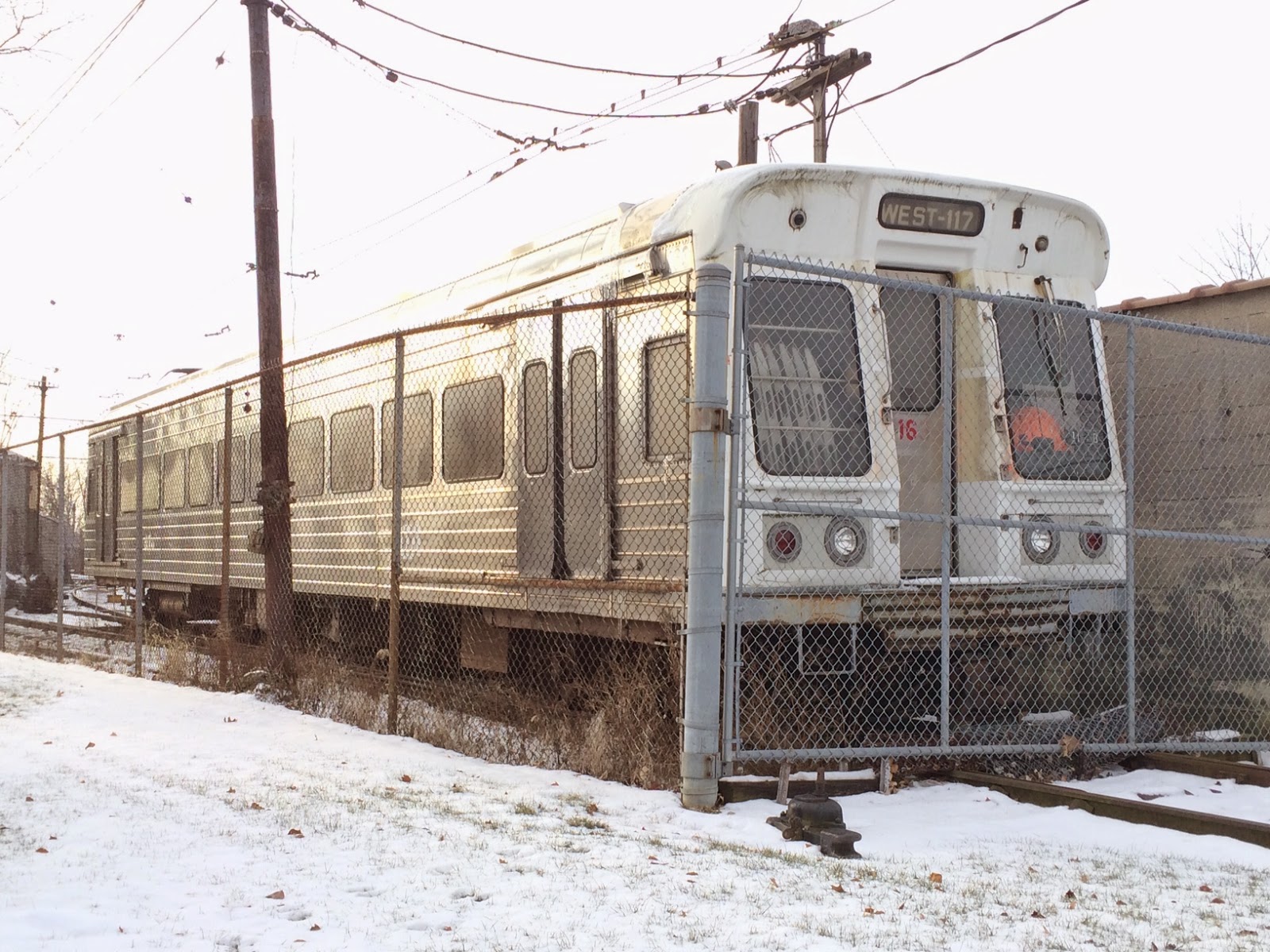Last weekend I had a business trip to Columbus, Ohio. When traveling I often look for railfanning opportunities and in Columbus you don't have to go far to find one: the Ohio Railway Museum is in the suburb of Worthington on the north side of town. Of course, there is a significant drawback to visiting ORM, namely that you're guaranteed to leave more depressed than when you arrived.
"Closed for winter" is a bit of an understatement; in a way ORM has been going through a winter of its own making for nigh on 40 years now. Founded in 1948, five years before IRM, ORM was among the earliest traction museums to begin regular operations on its own railroad and I believe was the first museum to operate both steam and electric trains. Though it never had a large collection it did have a rather historically significant one. It was among the earlier museums to complete "chicken coop" restorations; both a Columbus city car and a Columbus Delaware & Marion interurban parlor car were restored to operation from car body condition.
But then in 1975 the museum imploded. From what I understand, ORM's volunteers had recognized the serious problems the museum's site posed. They were shoehorned into a small slice of land along the old CD&M right-of-way, surrounded by houses (they actually had to abandon part of their line due to NIMBY complaints), with no way to expand. The museum was offered an old AEP branch outside of Columbus for free, complete with an existing repair shop, which would have given the museum a good permanent home. But the museum membership split over moving and eventually declined the AEP branch, electing to keep the museum where it was. The membership split, with most of the working volunteers quitting, and ORM never recovered.
Today the museum is as shown, a yard full of rusting equipment. The museum once had a small homebuilt car barn but that was dismantled a decade ago before it collapsed; now everything is either tarped or exposed to the weather. A few pieces of have been deaccessed and transferred to other museums but most are being held onto stubbornly by ORM or - as in the case of the unique Stillwell-roofed Erie doodlebug shown above - have been offered for sale but are already so deteriorated that no taker can been found.
The electric fleet, the core of the museum's collection, hasn't fared well. Among the examples in better shape is Ohio Public Service 64, shown above, a lightweight interurban car that ran on the old Toledo Port Clinton & Lakeside. ORM's very first car was an old Niles wood car from the TPC&L and that too is tarped and deteriorating in the yard but I was unable to get a good shot of it. Other historic cars hidden away include a C&LE high-speed, the CD&M parlor car, the Columbus city car, and an ancient Brownell single-trucker from Kansas City.
On the right is N&W 578, an attractive Pacific that once operated at the museum along with a train of nice Pennsy heavyweight passenger cars (some have since been sold, others are still sitting in the yard at ORM). A few years back a plan to sell this locomotive was floated which ended with an ORM volunteer, apparently of dubious stability, threatening to chain herself to the thing to keep it from leaving. On the left is a Pittsburgh PCC which ran only briefly, while in the middle is the better of the museum's two CTA 4000s. The worse one was scrapped about five years ago.
And here's one of ORM's most recent acquisitions, a Cleveland "Airporter" rapid transit car from the Trolleyville collection. Until a few years ago the museum's only operating car was its Illinois Terminal double-end PCC (a car which is coveted by several museums, IRM among them) but from what I understand it is no longer in use; passenger service is held down by a steeplecab towing a recently-acquired modernized coach of some sort that is lettered Ohio Railway Museum. A video of this operation can be found here. Sic transit gloria mundi.











